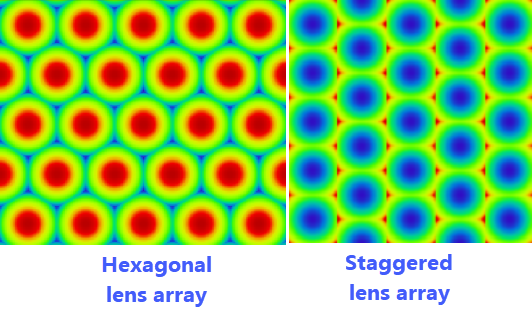
These two User-defined surfaces DLL creates an array of hexagonal arranged lenses and an array of staggered lenses. The code is based on us_array.c.
us_array_hex.dll has 4 parameters: the number of lenses in X and Y direction and the width and height of each lens.
us_array_staggered.dll has 3 parameters: the number of lenses in X and Y direction and the width of the lens.
Language: Cpp
Location: \Documents\Zemax\DLL\Surfaces\
[MOD: added the folder location for the DLL]
Click here to download | |||
|---|---|---|---|
| Date | Version | OpticStudio Version | Comment |
| 2018/01/06 | 1.0 | - | Creation |




